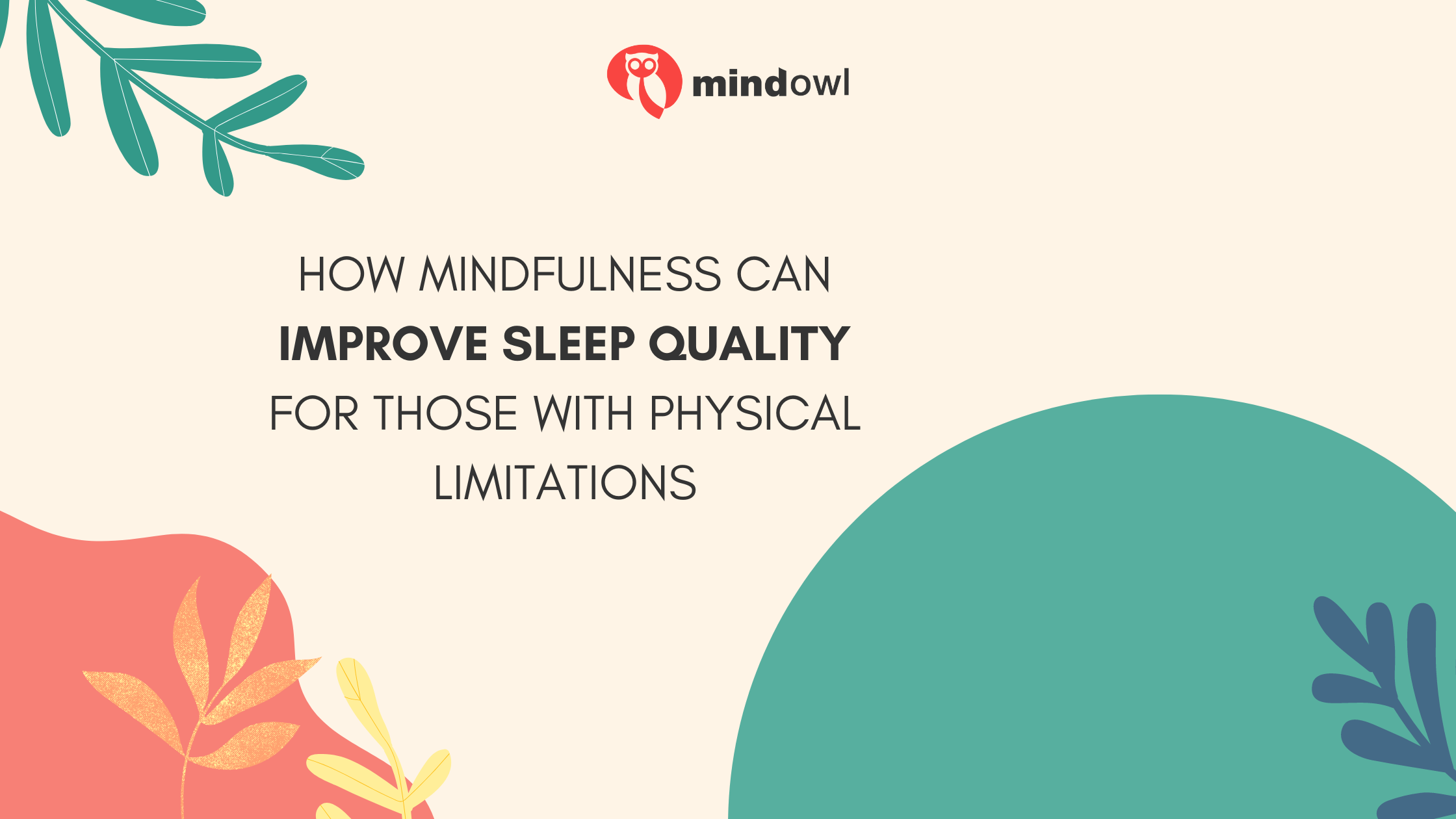For individuals facing physical limitations, achieving restful sleep can often feel like a challenge. Discomfort, pain, and restricted movement can interrupt sleep, leaving the body and mind unrested. However, incorporating mindfulness techniques into your routine can help improve sleep quality by calming the mind and relaxing the body.
Mindfulness reduces stress and shifts focus from physical discomfort, allowing for a more peaceful night’s rest.
In this blog post, we’ll explore how mindfulness practices can support better sleep, especially for those with mobility challenges, and how certain sleep solutions, like mobility-friendly beds, can further enhance restful sleep.
Understanding the Link Between Mindfulness and Sleep Quality
The Science Behind Mindfulness and Relaxation
Mindfulness is a powerful tool for promoting relaxation and mental clarity. It works by bringing attention to the present moment, which helps reduce anxiety and overthinking—two common culprits behind restless nights. When practiced regularly, mindfulness encourages the body to unwind, making it easier to fall asleep and stay asleep. Studies have shown that mindful practices lower cortisol levels, the stress hormone that can interfere with sleep, allowing you to achieve a deeper, more restful sleep.
Sleep Challenges for People with Physical Limitations
Individuals with physical limitations, such as mobility issues or chronic pain, often face unique challenges when it comes to sleep. Pain and discomfort can prevent the body from fully relaxing, making it difficult to fall or stay asleep. Unless aided by a bed that helps you to easily change positions, mobility-challenged persons face prolonged periods of discomfort even in their rest time. Being stuck in one position for too long can result in restless sleep, pressure points, or even increased pain, further reducing sleep quality. Over time, poor sleep can take a toll on both physical and mental well-being, making it essential to find ways to enhance relaxation and support restful sleep.

Mindfulness Techniques That Can Help Improve Sleep
Body Scan Meditation
Body scan meditation is an excellent way to release built-up tension from the body and create a sense of calm before bed. In this practice, you slowly focus your attention on different parts of the body, noticing any areas of tightness or discomfort. By consciously relaxing each muscle group from head to toe, you allow the body to unwind fully. This technique is particularly beneficial for individuals with physical limitations, as it helps reduce physical strain and encourages the body to enter a state of relaxation, making it easier to fall asleep. You might also consider Delta Munchies as part of your relaxation toolkit, as many find it helpful for unwinding and preparing the mind and body for sleep.
Breathing Exercises
Breathing exercises are another simple but powerful tool for reducing anxiety and calming the nervous system before sleep. Deep breathing helps slow your heart rate and lower stress levels, preparing the body for rest. One effective technique is diaphragmatic breathing, where you focus on breathing deeply into your belly, and then slowly exhaling. This not only quiets the mind but also releases tension in the body, promoting relaxation. For those experiencing physical pain or discomfort, breathing exercises can offer a way to shift focus away from the pain and toward a more peaceful state.
Mindful Visualization
Mindful visualization involves mentally creating a peaceful and soothing environment, which can ease stress and prepare your mind for sleep. By imagining a calm, serene space—such as a quiet beach or a tranquil forest—you shift attention away from any discomfort or restlessness you may be experiencing. Visualization can be tailored to your personal preferences, allowing you to focus on the details that make you feel the most relaxed. This technique works well when combined with breathing exercises, as the combination can help deepen your sense of calm and promote more restful sleep.
Adapting Mindfulness for Those with Physical Limitations
Modifying Meditation Postures for Comfort
For individuals with physical limitations, finding a comfortable meditation posture can sometimes be challenging. However, adapting your practice to suit your body’s needs is key to reaping the full benefits of mindfulness. Instead of traditional meditation positions like sitting cross-legged, you can opt for seated meditations in a chair or on the edge of the bed. Supportive pillows can be used to prop up areas of discomfort, allowing you to maintain a comfortable position for longer periods. The goal is to avoid further strain or pain during meditation, making it easier to focus on relaxation and mindfulness.

Image by EnergieDeVie on Pixabay
Mindful Awareness of Physical Sensations
Mindful awareness encourages you to tune in to the sensations you experience in your body, even if they involve discomfort. By acknowledging physical sensations without judgment, you create a space for mental relaxation. Instead of resisting or trying to block out discomfort, mindfulness teaches you to observe it and let it be. This acceptance can reduce stress and frustration, helping to calm the mind. By focusing on the breath or a calming visualization while observing your sensations, you can maintain a sense of peace even in the presence of physical challenges.
The Role of Mobility-Friendly Beds in Promoting Restful Sleep
A mobility-friendly bed can be an essential addition to promoting restful sleep, especially for individuals with physical limitations. These beds are designed to provide extra comfort and support, making it easier to shift positions or find a comfortable angle for sleep. The ability to adjust the bed’s incline can reduce pressure on certain areas, easing discomfort and allowing for better alignment. When paired with mindfulness practices, the right sleep environment, including a mobility-friendly bed, can create the perfect conditions for a deep, restorative rest.
A Mindful Path to Restful Nights
Incorporating mindfulness into your bedtime routine offers significant benefits, particularly for individuals dealing with physical limitations. Mindfulness practices such as body scan meditation, deep breathing, and mindful visualization can help reduce stress and ease discomfort, promoting a more restful night’s sleep. Creating a sleep-friendly environment, with the addition of a mobility-friendly bed if needed, further enhances the effects of mindfulness, ensuring you wake up feeling refreshed and restored.
By combining mindfulness with comfort, you can greatly improve your sleep quality and overall well-being.
MindOwl Founder – My own struggles in life have led me to this path of understanding the human condition. I graduated with a bachelor’s degree in philosophy before completing a master’s degree in psychology at Regent’s University London. I then completed a postgraduate diploma in philosophical counselling before being trained in ACT (Acceptance and commitment therapy).
I’ve spent the last eight years studying the encounter of meditative practices with modern psychology.

